Is it possible to paint on fabric with regular acrylic? This question interests all those who have ever thought about creating an original and bright thing for themselves or as a gift. Acrylic paints can be purchased in art stores, and before you start painting with them, it is worth learning about some features.
Properties and features of acrylic dyes
Is it possible to paint with acrylic paints on fabric? Yes, painting with acrylic on clothes is one of the most famous ways to create a unique and bright thing. There are different shades of paints for painting on fabric. Acrylic is also available in different forms - in jars, tubes or spray cans.
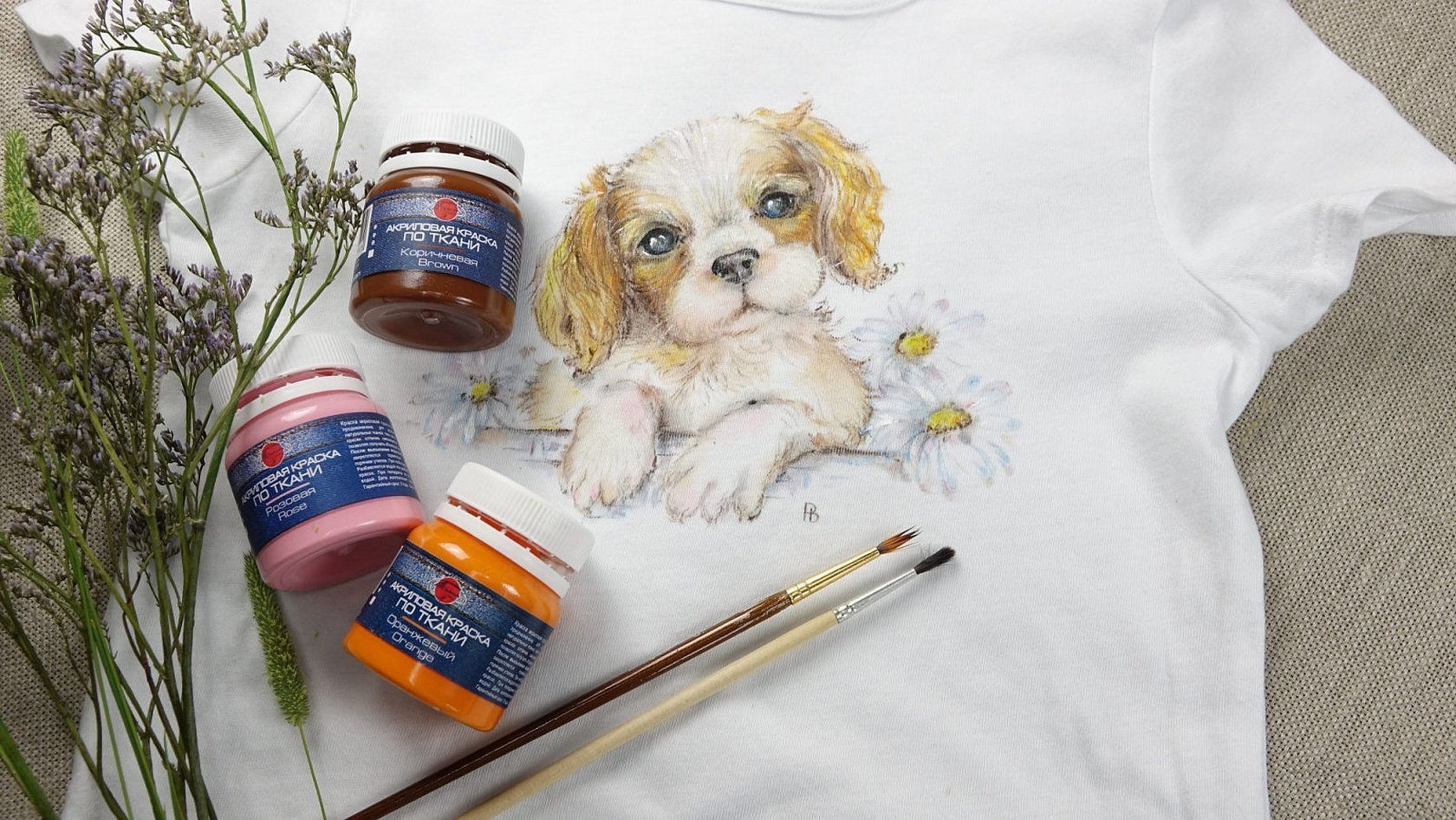
Acrylic painting does not require any special skills or equipment. You will need brushes, a container with diluting liquid or water, and the item itself.

Acrylic is a "thick" paint, it can be applied in several layers, adding details or mixing with the underlying shade. Moderate use of liquid makes it thick and suitable for working with fabric, but outlines should be used.
This material has many advantages:
- They dry quite quickly.
- You can mix colors to create new ones and use them in painting.
- Acrylic can be purchased at any craft store.
- The design really lasts a very long time and does not wash off;
- The patterns come out bright.
Important! Acrylic paints are safe for children, but care must be taken to ensure that the dye does not come into contact with the eyes, mouth, or damaged areas of skin that have not yet healed.
There are also a few more important details related to the use of this paint:
- It is worth paying attention to the expiration date of paints. Over time, they dry out and can no longer be used for painting.
- It can spread on the fabric, which will seriously spoil the drawing. Therefore, before work, it is recommended to apply the outline to the item and have a sketch of the future finished work at hand.
- It is not always possible to immediately obtain the desired color when mixing.
Otherwise, working with acrylic paints is simple and suitable for beginner artists.
Selecting fabric for painting
Before you start working, you need to know which acrylic paints for fabric to buy and how to use them depending on the fabric. Identifying the right acrylic is not difficult.
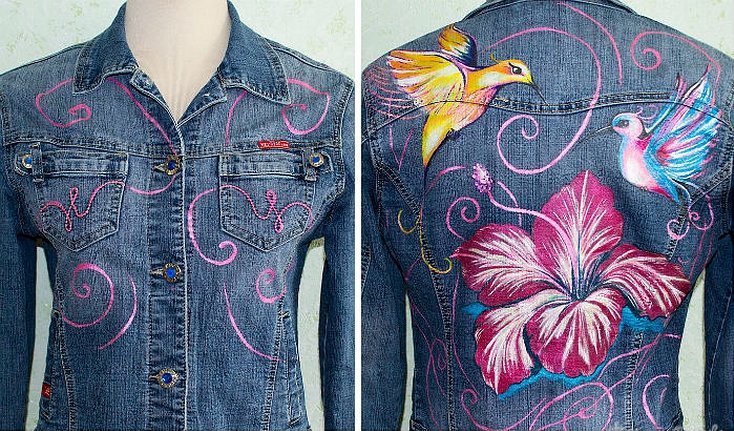
To understand what kind of paint you need to buy, you should look at the label.
- The "Silk" mark means that the stiffness of the fabric will not be changed and the paint is suitable for light and thin items, such as chiffon or silk.
- Textile sign. This dye is suitable for thick and hard fabrics (denim, leather, linen), it does not spread so much and is easy to work with on such a surface.
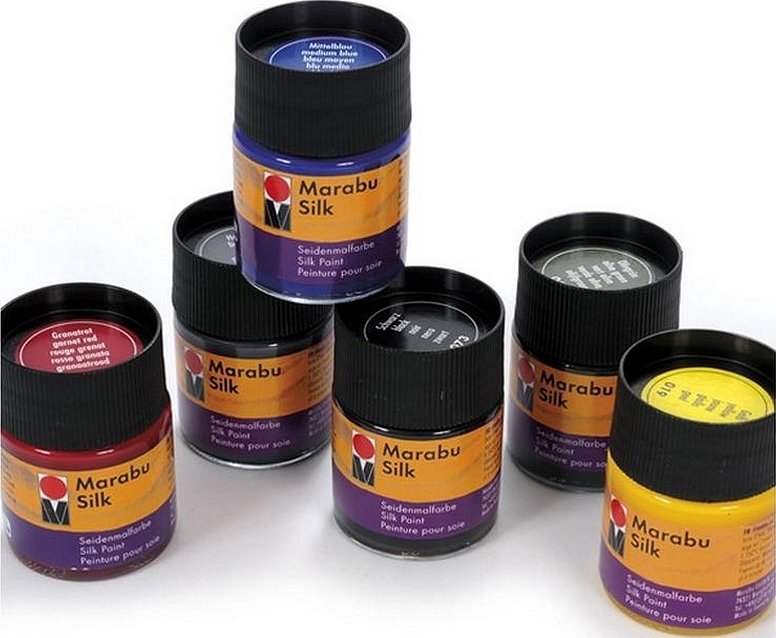
For work, it is best to select items made of light or white fabric - this way, the acrylic colors retain their original color. On a dark product, the shades may change.
Types of painting
Painting on fabric using special dyes (including acrylic) is called batik. Batik involves applying paint to fabric using a fixative (reserve composition).
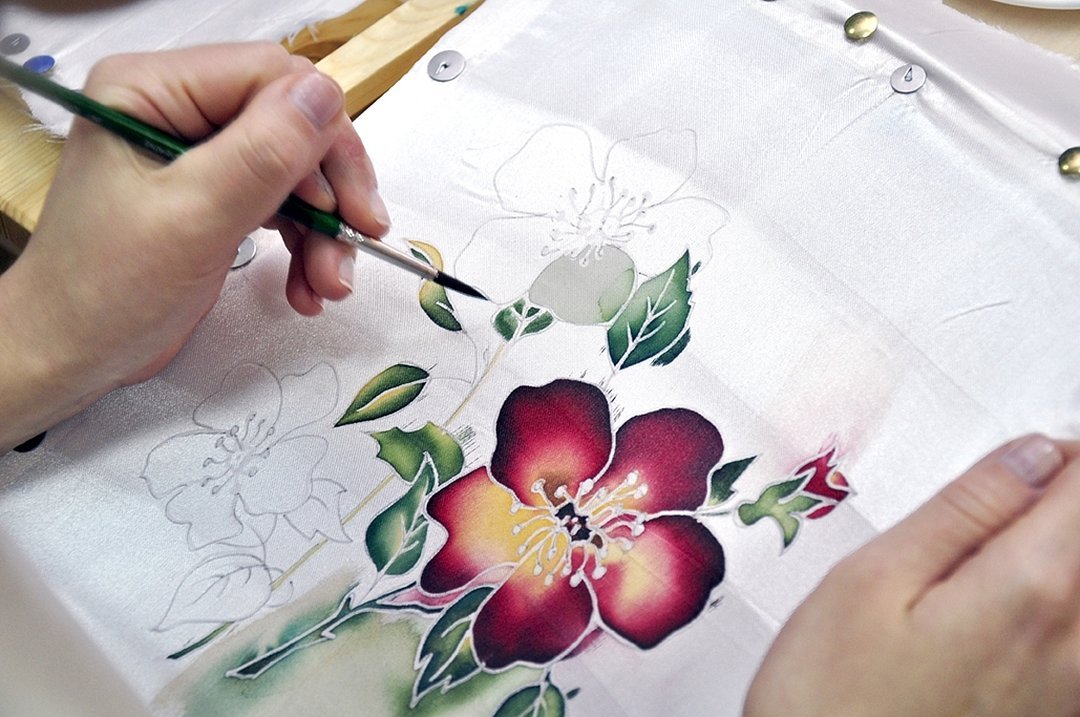
There are several types of coloring:
- Hot batik. Quite a complex process that requires skills. During painting, a wax coating is used, which is then removed, leaving behind either a white or colored background.
- Cold batik. The paints are applied using clearly delimited lines, due to which the acrylic does not wash off or smear from the fabric. Stencils are often used for this technique, you can also take paint in a spray can.
- Knotted batik. Small knots are tied on the fabric using a thread or cord, and then paint is applied to them. After drying, new knots are made and so on until the pattern is finished.
- Free painting. A sketch of the future design is applied to the fabric and then painted with paints. Sometimes you can do the work without a preliminary sketch, working on inspiration and getting unusual patterns. To fix the result, a reserve composition is applied.
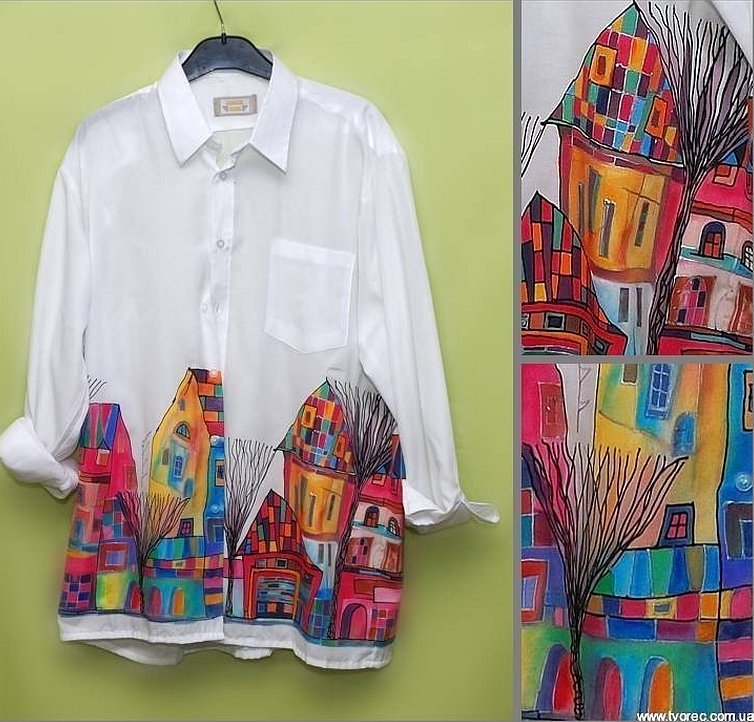
Methods of applying acrylic paint
There are several different ways to paint a design on fabric using acrylic paints. They are suitable for both beginners and people who have been painting for a long time.
- Copying. The easiest way, which does not require any specific skills. The most necessary for this method is the ability to clearly transfer the pattern to the item. The desired pattern is first printed out (it is desirable that the outlines are thick and dark), then the fabric is stretched over a piece of cardboard or plywood and fixed. The printed pattern is placed under the item and the outline is redone. After that, they begin to paint.
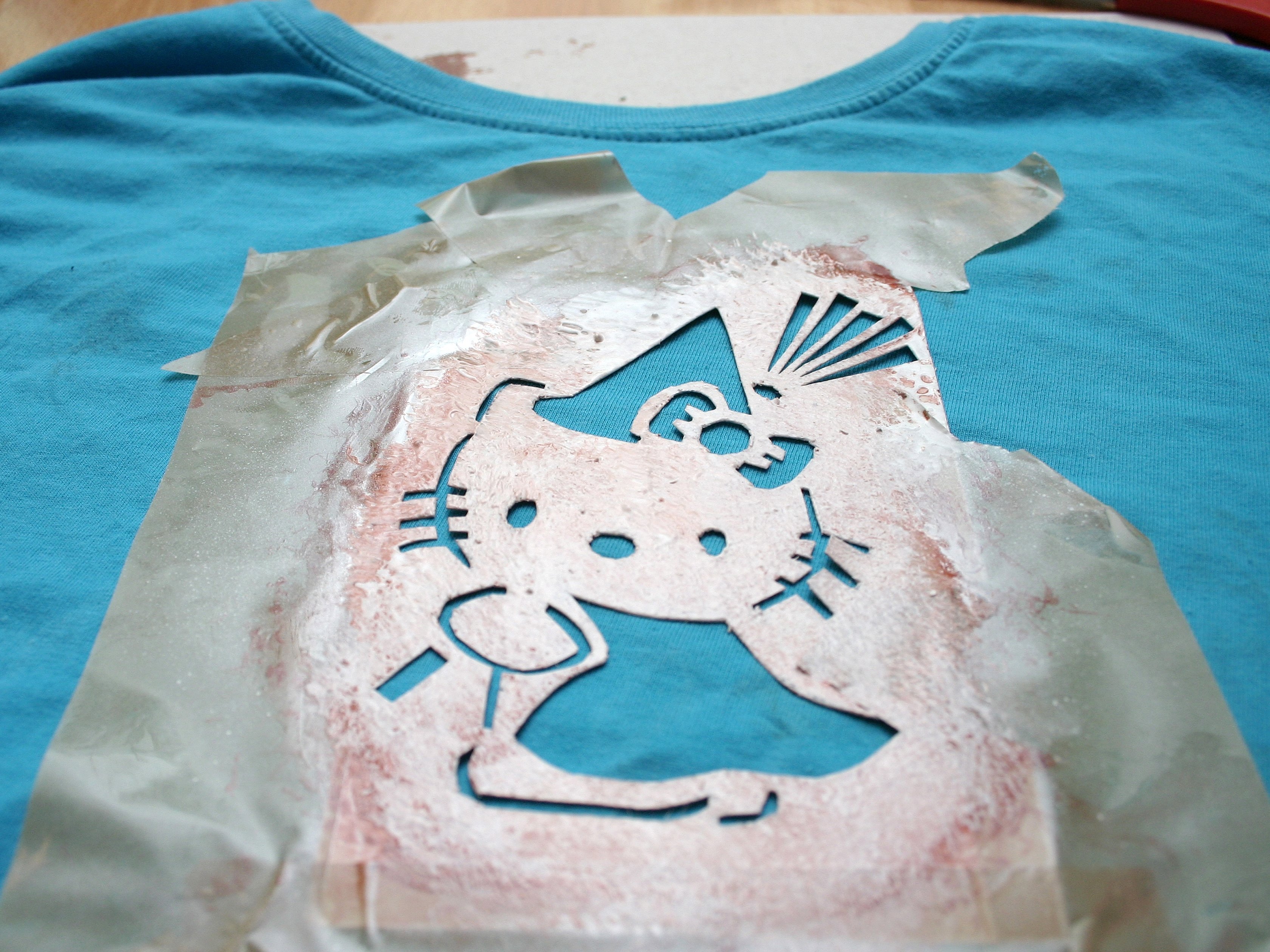
- Another fairly simple method is to use special stencils. You can make them yourself from paper, or buy them in a store. This technique is suitable when the same drawing needs to be copied (for example, for uniform T-shirts or original fabric napkins). The stencil is attached to the desired place, and paint is applied on top.
- A more complex method is to draw a sketch by hand and then paint it. If you have enough imagination and skills, you can try this method. Some professionals do not even draw a sketch and immediately work with color, it is better for beginners to start with a pencil drawing. First, you should also draw the future work in an album or sketchbook to know exactly the location of the sketch, its size, etc.

To start working with a particular method, you should consider some recommendations:
- Before buying, be sure to check the price, manufacturer and expiration date. This will help avoid purchasing low-quality and old paints.
- The presence of toxins and allergens in dyes and the presence of an unpleasant odor are also checked.
- Before painting, apply paint to some scrap fabric to check the colour and the nature of the overlay.
- Brushes, sponges and rollers are made of synthetic materials.
- A new layer (if there is no purpose in mixing paints) is applied only after the bottom one has dried.
- A day after the picture is ready, iron it for 5 minutes.
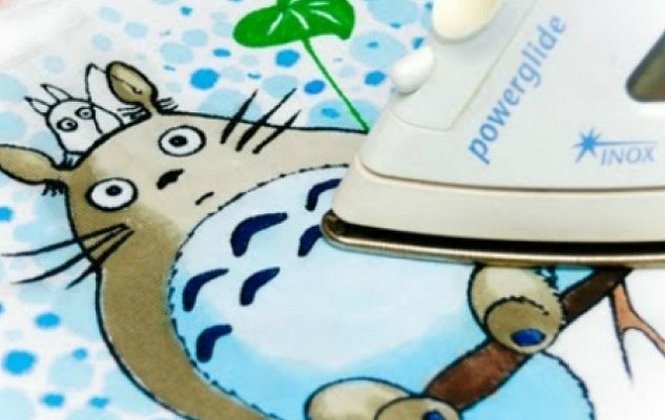
To begin any work, the artist must have the following tools and materials:
- The paints themselves (there are different dyes in stores, they can be labeled “acrylic paints” or “acrylic”, and will differ little).
- Soft synthetic brushes.
- Pins, clothespins, hooks.
- Frame, hoop, plywood or a piece of cardboard.
- Thinning compound (also available at art stores).
- Sponges, cotton swabs.
- Palettes, containers for diluting paints and water.
- Hair dryer and iron.

How to care for a painted product
Once the item has been painted and dried, it needs to be properly cared for to ensure that the paint lasts a long time and remains vibrant.
- The product should only be washed at a temperature not exceeding 40 degrees.
- The amount of powder should be minimal, the product is used without bleach.
- When washing by hand: do not twist the fabric or rub the area where the pattern is located.
- Before washing, turn the item inside out, then straighten it out and hang it on a clothesline.
- The item must not be soaked.
- Iron carefully, from the inside out.
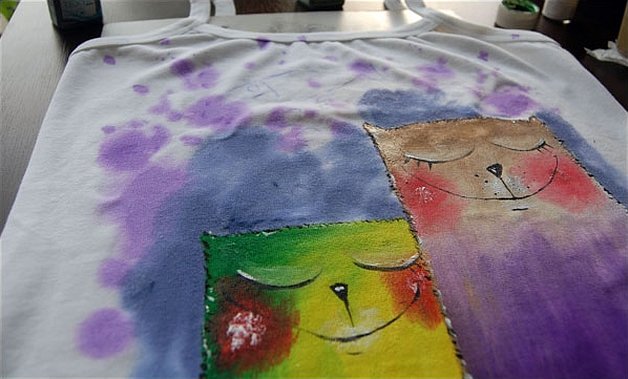
How to Remove Acrylic Paint from Fabric
It is necessary to remove acrylic from fabric in different cases. This could be paint accidentally spilled on clothes or unsuccessful acrylic drawings on fabric that you want to remove.
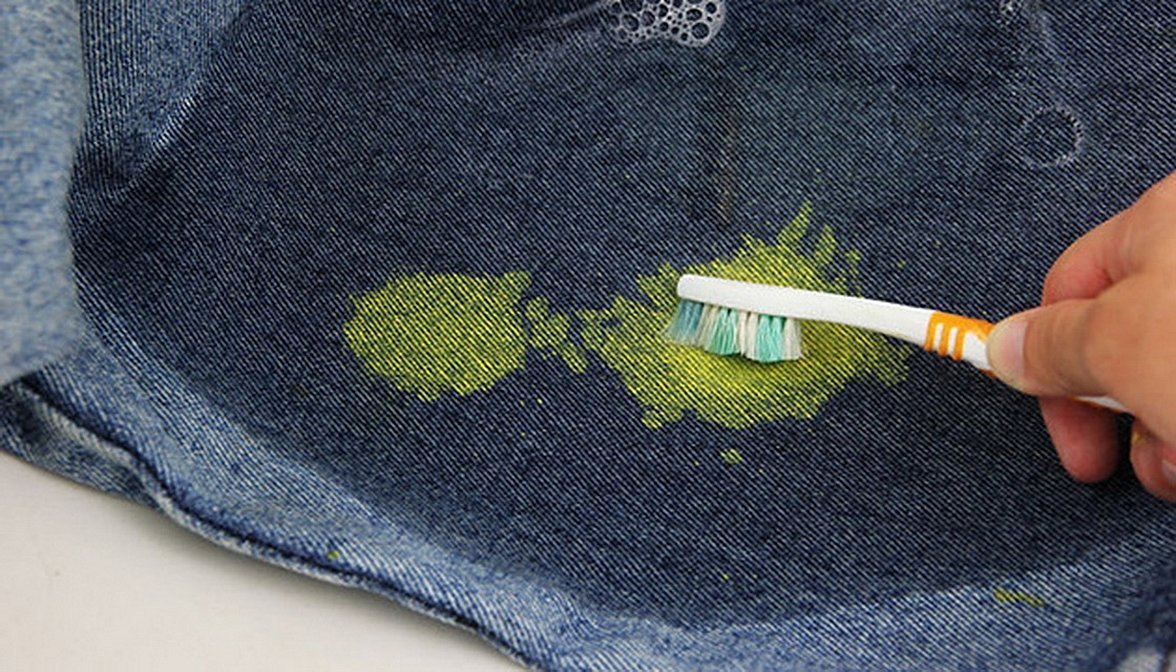
If a stain has just appeared on your clothes, you should start cleaning it immediately before it sets in:
- Small drops of paint are removed with a teaspoon, plastic container, or butter knife.
- The garment is turned inside out and placed under cold water until the dye fades. Then it is washed.
- You can also soak the item in cold water and prepare a soap solution during this time. The stain is rubbed off with a sponge.
In cases where the dye has dried (for example, a finished painting or a stain that has been there for a long time), the following remedies can help:
- A mixture of ammonia and vinegar 1:1. Apply the product to a sponge and rub off the stain, then soak the item and wash.
- Acetone. The sponge is soaked in the substance and rubbed into the stain, after which the item is washed.
- Scotch tape. In some cases, this method is suitable. The adhesive tape is applied to the drawing, smoothed out and carefully removed.
- Alcohol. Moisten cotton wool with alcohol and apply to the stain for 15-20 seconds, then rub a little more. The remains should be wiped off with dry cotton wool. The item should be washed and dried.
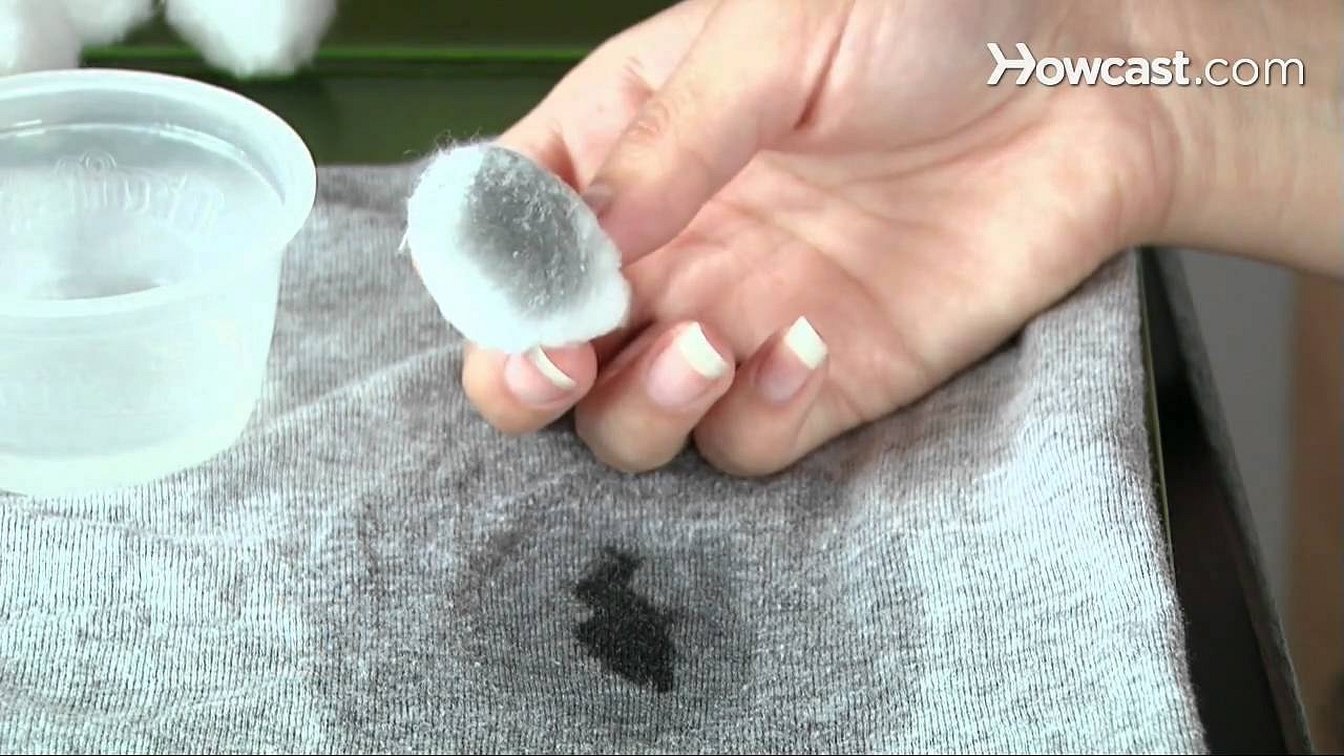
Sometimes dried stains can be removed easily with dishwashing liquid and a sponge (or soft brush).
Is it possible to paint with acrylic on fabric, and do it in different ways? Definitely yes, and this option is suitable for working with children or for creating your own unique thing. High-quality paints will not only not cause harm, but will also lie well on the fabric and will last a long time.




